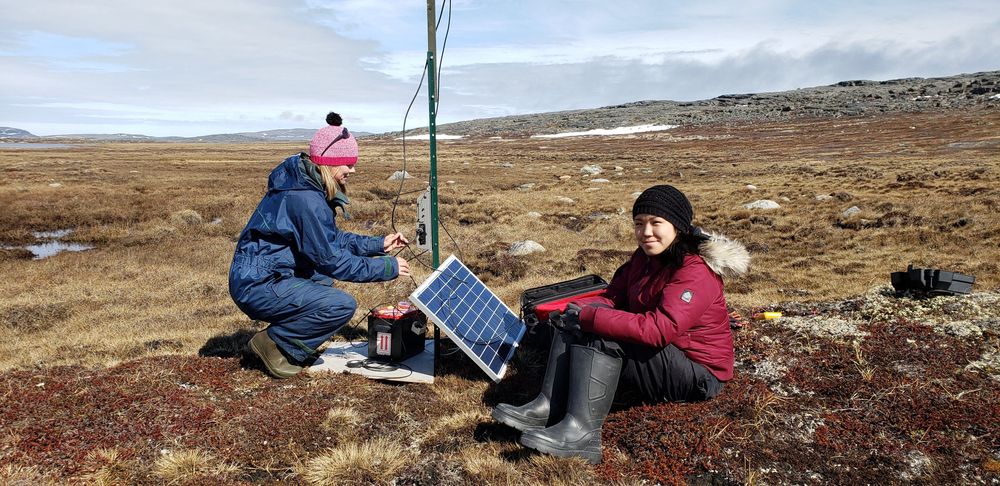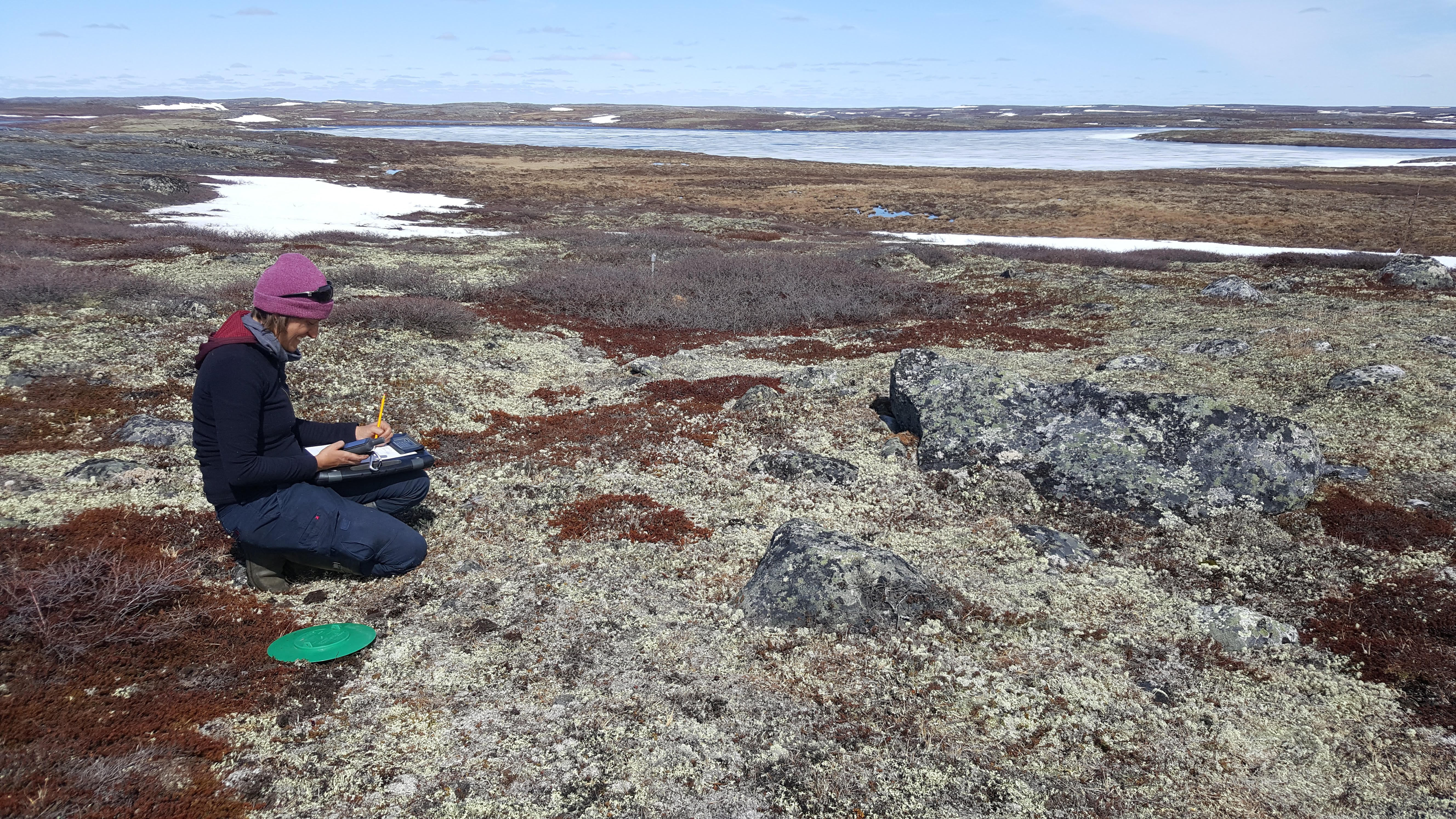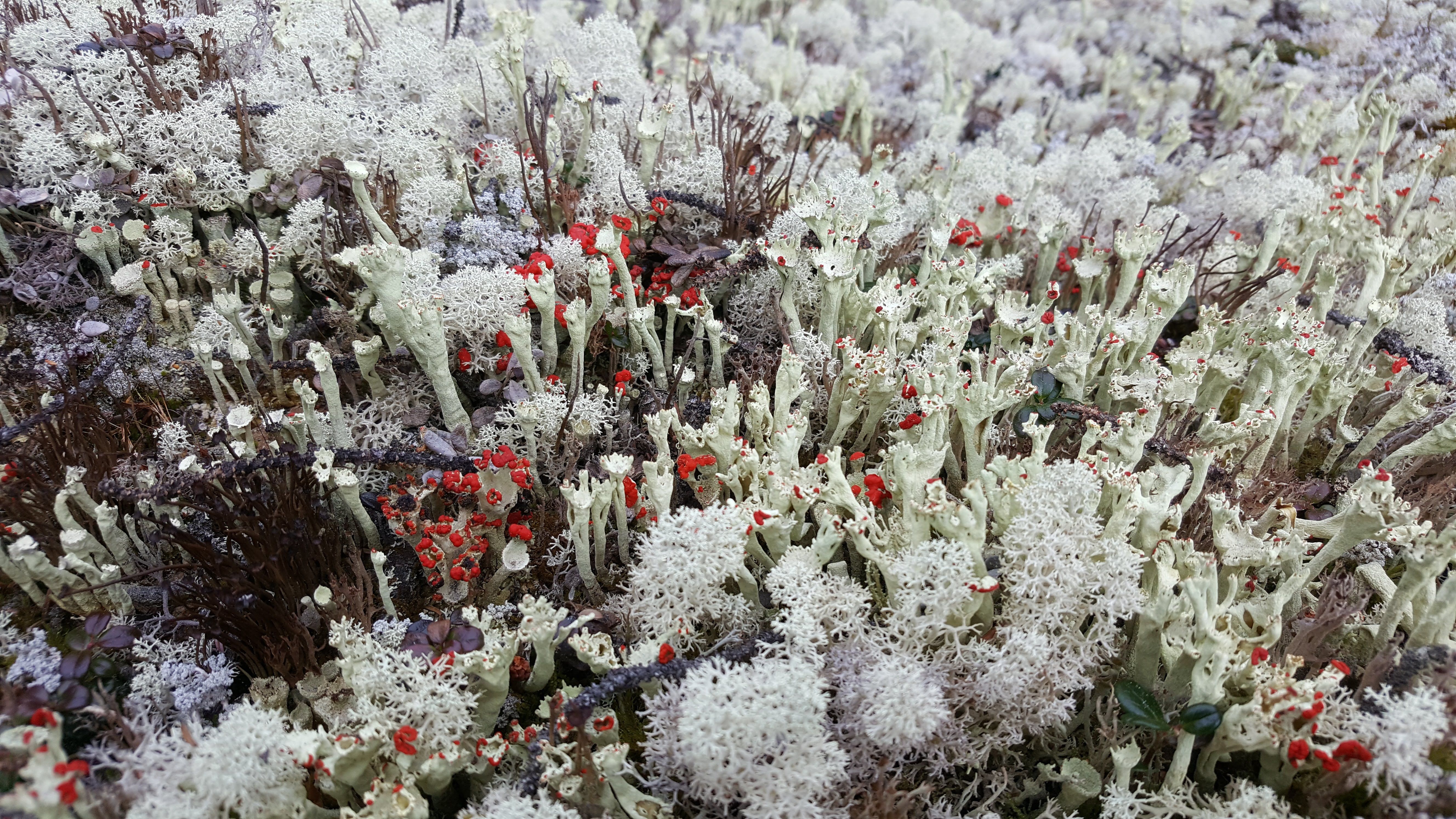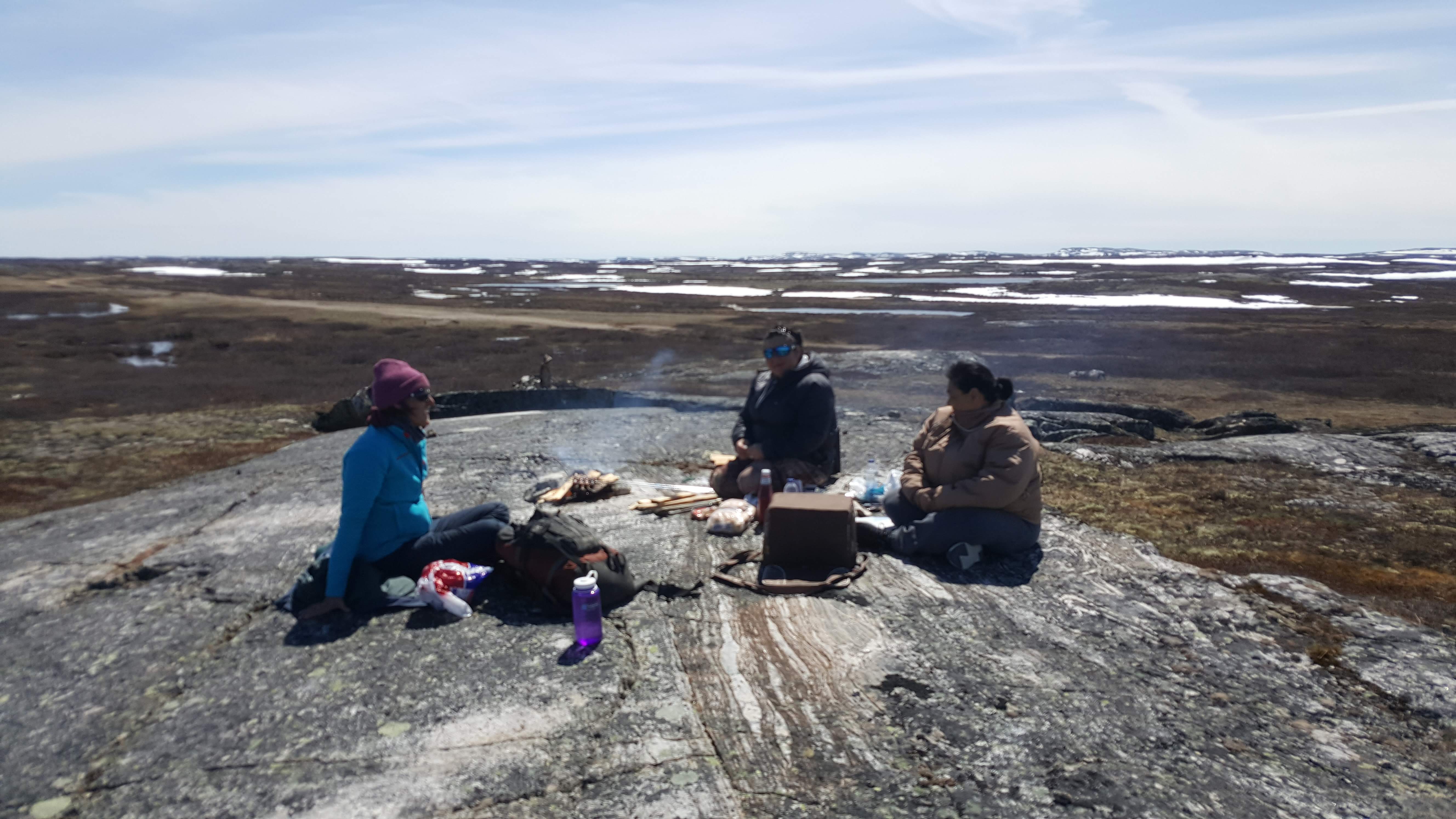
We are currently seeing significant changes on the land. The climate is changing, human development is intensifying, and new species are arriving or adjusting their range: all these factors are likely to transform the landscape and the species inhabiting it. Against this backdrop, monitoring development in habitats and identifying changes in animal and plant communities is increasingly important. Therefore, the Québec Government, through the implication of the Ministère de l’Environnement et de la Lutte contre les changements climatiques de la Faune et des Parcs, is working to implement a biodiversity monitoring program in Québec.
This consists of creating an inventory of the living species in the area, both plants and animals (e.g. fish, birds, insects), to assess diversity and certain characteristics like dates of their emergence or arrival. The primary objective is to identify short- and long-term changes in habitats, communities and populations. This monitoring will help us anticipate certain changes and assess their impact. It also aims to improve the integration and sharing of information about natural environments.
Implementing a biodiversity monitoring program entails a number of steps. The first is to identify indicators enabling the quick detection of changes in wetlands, forests, tundra, lakes and rivers. These indicators are measured using satellite images or field surveys. Field data include, but is not limited to, the capture of various invertebrate communities (dragonflies, butterflies, beetles, spiders), recordings of diverse animal songs or vocalizations (birds, bats, crickets, frogs), photographic tracking of vegetation growth and an inventory of various plant species.
The monitoring program began in southern Québec in 2016, and the first tests in Nunavik were conducted in 2018. By 2024, nearly 500 sites were tracked across the province, with 58 sites around Nunavik located in 7 communities, 3 national parks and 3 protected areas. The aim is to forge lasting partnerships with communities around Nunavik to work together to carry out inventories on the land. To date, the Uumajuit warden program, Kativik Regional Government, Nunavik Parks, the Centre d'études nordiques (CEN) and the Nunavik Research Center have been important partners in this project. We have also received assistance from the Landholding Corporations and Anguvigait (LNUKs) in multiple communities.
The development and implementation of biodiversity monitoring communication tools is in its early stages, but the Government of Québec is already pooling data to produce accessible and simple data visualization tools for everyone. All data is available for download for our partners. The aim of this platform is to make the results of the biodiversity monitoring project available to the public to better understand together the changes as well as the complexity and significance of natural environments. Nature and preservation of the land are key concerns for northern communities; biodiversity monitoring is aimed at supporting their ability to cope with and adapt to these changes. After all, nature is precious and should be passed down to future generations so that they can also enjoy it.

ᐅᓪᓗᒥ ᓄᓇᐅᑉ ᐊᓯᑦᔨᕙᓪᓕᐊᓂᖓᓂᒃ ᑕᑯᑦᓴᓚᕆᐅᑎᓪᓗᒋᑦ ᖃᐅᔨᕙᓕᕐᑐᒍᑦ. ᓯᓚ ᐊᓯᑦᔨᕙᓪᓕᐊᓕᕐᒪᑦ, ᓄᐃᑎᕆᓂᖅ ᓱᓇᓕᒫᓂᒃ ᐱᕙᓪᓕᐊᑐᐃᓐᓇᓕᕐᑐᑦ ᐊᒻᒪᓗ ᑕᑯᑦᓴᐅᓚᐅᕐᓯᒪᖕᖏᑐᑦ ᑕᑯᔭᐅᕙᓕᕐᓱᑎᒃ ᐅᕝᕙᓘᓐᓃᑦ ᐃᓱᕐᕆᒋᔭᒥᓄᑦ ᓅᑉᐸᓕᕐᓱᑎᒃ ᐆᒪᔪᐃᑦ: ᐃᓘᓐᓇᑎᒃ ᐱᑦᔪᑎᓖᑦ ᓄᓇᒥᐅᑉ ᑕᑯᑦᓴᐅᓂᖏᓐᓂᒃ ᐊᑦᔨᐅᖏᓪᓕᑎᕆᑐᐃᓐᓇᕆᐊᓖᑦ ᐊᒻᒪᓗ ᐆᒪᔪᐃᑦ ᓇᔪᓲᖏᓐᓂᒃ. ᑌᒣᑦᑑᓕᕐᒪᑕᑕᒐ, ᐱᒻᒪᕆᖕᖑᐸᓪᓕᐊᑐᐃᓐᓇᓕᕐᑐᖅ ᐃᑉᐱᒍᑐᑦᓯᐊᕆᐊᖃᓕᕐᓂᖅ ᓴᓇᕕᖃᕐᓂᓂᒃ ᐆᒪᔪᐃᑦ ᓇᔪᒐᖏᓐᓂ ᐊᒻᒪᓗ ᓇᓗᓀᕐᑐᐸᓪᓗᒋᑦ ᐆᒪᔪᐃᑦ ᐱᕈᕐᑐᐃᓗ ᐊᔪᒉᓪᓕᓯᒪᓕᕐᓂᖏᑦ. ᑌᒣᒻᒪᑦ, Québec government, the Ministère de l’Environnement et de la Lutte aux Changements Climatiques, de la Faune et des Parcs, ᐱᓇᓱᐊᖃᑎᒌᓕᕐᖂᒃ ᐃᖏᕐᕋᓯᑎᑦᓯᓚᖓᓕᕐᓱᑎᒃ ᐱᓇᓱᒐᕐᒥᒃ ᐆᒪᔪᖏᓐᓄᑦ ᐱᕈᕐᑐᖏᓐᓄᓗ ᑯᐯᑉ.
ᑕᒪᒃᑯᐊ ᐃᓚᖃᕆᐊᖃᓛᕐᑐᑦ ᓄᐃᑕᐅᓂᖏᓐᓂᒃ ᖃᓄᐃᓪᓗᐊᑎᒋᓕᕐᒪᖔᑕ ᖃᐅᔨᓴᕐᑕᐅᓂᖏᓐᓂᒃ ᐆᒪᔪᐃᑦ ᑖᕙᓂ ᓄᓇᒥ, ᖃᐅᔨᓴᕐᑕᐅᑎᓪᓗᒋᑦ ᐱᕈᕐᑐᐃᑦ ᐊᒻᒪᓗ ᐆᒪᔪᐃᑦ (ᐆᑦᑑᑏᑦ ᐃᖃᓗᐃᑦ, ᑎᒻᒥᐊᑦ, ᖁᐱᕐᕈᐃᑦ), ᓇᓪᓕᐊᓃᑉᐸᓕᕐᓂᖏᑦ ᐊᒻᒪᓗ ᐱᐅᓯᕆᕙᓕᕐᑕᖏᑦ (ᐆᑦᑑᑎᒃ ᐊᐅᓪᓚᐸᓕᕐᓂᖏᑦᑕ ᐅᓪᓗᖏᑦ ᐅᕝᕙᓘᓐᓃᑦ ᑎᑭᑉᐸᓕᕐᓂᖏᑦ). ᑐᕌᒐᓪᓚᕆᐅᑎᓪᓗᒍ ᓇᓗᓀᕐᑐᐃᓂᖅ ᐊᓯᑦᔨᓯᒪᑫᓐᓇᓂᐅᕙᓕᕐᑐᑦ ᐊᒻᒪᓗ ᐊᑯᓂᓂᑦ ᐊᓯᑦᔨᓯᒪᓂᐅᕙᓕᕐᑐᑦ ᐃᓂᒋᓲᖏᑦᑕ, ᑲᑎᒪᓲᒍᓂᖏᑦᑕ ᐊᒻᒪᓗ ᐅᓄᕐᓂᕆᓕᕐᑕᖏᑦᑕ. ᑖᓐᓇ ᐃᑉᐱᒍᓱᓐᓂᖅ ᐃᑲᔪᕐᓯᓛᖁᓇᕐᑎᓗᒍ ᓯᕗᓂᕐᒥ ᓂᕆᐅᓐᓇᖃᑦᑕᓛᕐᑐᓂᒃ ᐊᒻᒪᓗ ᖃᓄᐃᓕᖕᙰᓯᒪᓂᐅᖃᑦᑕᓛᕐᑐᓂᒃ. ᑐᕌᒐᖃᕐᒥᓗᓂ ᐱᕙᓪᓖᒋᐊᕐᓂᓂᒃ ᑐᑭᓯᐅᑎᑦᓴᓂᒃ ᐃᓕᐅᕐᙯᖃᑎᒌᓐᓂᓂᒃ ᐊᒻᒪᓗ ᐊᕕᑦᓯᒪᖃᑎᒌᓐᓂᓂᒃ ᓄᓇᐅᑉ ᐱᐅᓯᕆᓕᕐᑕᖓᑕ ᐊᕙᑎᒧᐊᖓᔪᓂᒃ.
ᐃᖏᕐᕋᓯᑎᑦᓯᓂᖅ ᐆᒪᔪᐃᑦ ᐱᕈᕐᑐᓗ ᐃᑉᐱᒋᔭᐅᓂᖏᓐᓂᒃ ᐃᓚᖃᓚᖓᔪᖅ ᐊᒥᓱᐃᓂ ᑲᒪᒋᔭᐅᒋᐊᓕᓐᓂᒃ. ᓯᕗᓪᓕᖅ ᓇᓗᓀᕐᑐᐃᓂᖅ ᖃᐅᔨᒪᐅᑎᑦᓴᓂᒃ ᓯᕗᓪᓕᐹᓂᒃ ᑕᑯᔭᐅᑲᐱᖃᑦᑕᕈᑎᒋᓂᐊᕐᑕᖏᓐᓂᒃ ᐊᓯᑦᔨᕙᓪᓕᐊᓂᖏᑦᑕ ᐃᒪᓴᓕᕌᑦ, ᓇᐹᕐᑐᐃᑦ, ᐱᕈᕐᑐᑕᓖᑦ ᒥᑭᔪᕐᓚᓂᒃ ᓄᓀᑦ, ᑕᓰᑦ ᐊᒻᒪᓗ ᑰᑦ. ᑖᒃᑯᐊ ᖃᐅᔨᒪᐅᑎᑦᓭᑦ ᐱᓯᒪᒍᓐᓇᕋᔭᕐᑐᑦ ᖁᒻᒧᐊᑎᑕᐅᓯᒪᔪᒥᑦ ᐊᑦᔨᓕᐊᒍᓯᒪᔪᓂᑦ ᐅᕝᕙᓘᓐᓃᑦ ᓄᓇᒥᒃ ᕿᒥᕐᕈᓂᕐᓂᑦ. ᓄᓇᒥ ᑐᑭᓯᐅᑎᑦᓴᐅᑎᓪᓗᒋᑦ ᐳᑯᑦᑕᐅᖃᑦᑕᕋᔭᕐᑐᑦ ᐃᓚᖃᕐᑎᓗᒋᑦ ᐊᑦᔨᒌᖕᖏᑐᓂᒃ ᑎᒍᔭᐅᖃᑦᑕᑐᓂᒃ ᑯᔭᐱᒐᖃᖕᖏᑐᑦᓴᔦᑦ (ᑭᑦᑐᕆᐊᕐᓓᑦ, ᑕᖃᓕᑭᑖᑦ, ᒥᖕᖑᐃᑦ, ᐋᓯᕙᓛᑦ), ᓂᐱᓕᐅᕐᑕᐅᖃᑦᑕᓗᑎᓗ ᐆᒪᔪᐃᑦ ᓂᐸᓕᔭᕐᑐᑦ ᐅᕝᕙᓘᓐᓃᑦ ᐅᕕᖕᖏᐊᕙᓚᑦᓯᔪᑦ (ᖁᐸᓄᐊᑦ, ᐅᓐᓄᐊᓯᐅᑏᑦ ᓄᓂᕙᒃᑫᑦ ᑎᖏᓲᑦ, ᒪᒡᒍᑌᑦ ᒥᖕᖏᔫᑦ, ᐱᓪᓕᕆᐊᑦ), ᐊᑦᔨᓕᐅᕈᑎᑎᒍᑦ ᐱᕈᕐᐸᓕᐊᔪᑦ ᑕᑯᑦᓴᐅᑎᑕᐅᓂᖏᑦ ᐊᒻᒪᓗ ᓇᓗᓀᕐᑐᑕᐅᓗᑎᒃ ᐊᑦᔨᒌᖕᖏᑐᑦ ᐱᕈᕐᑐᐃᑦ.

ᐃᑉᐱᒍᓱᓐᓂᖅ ᐱᒋᐊᕐᓯᒪᔪᖅ ᑯᐯᑉ ᓯᕿᓂᖓᓂ 2016-ᒥ, ᐊᒻᒪᓗ ᓯᕗᓪᓕᐹᒥ ᐆᑦᑐᕋᕐᓃᑦ ᑲᔪᓯᓯᒪᑦᓱᑎᒃ 2017-ᒥ. 2018-ᒥ, ᖃᐅᔨᓴᕆᐊᖃᑦᑕᓚᐅᔪᔪᒍᑦ 50-ᓂ ᓄᓇᓂ ᐃᓕᒃᑰᑎᕐᑐᓂ, ᐃᓚᐅᑎᓪᓗᒋᑦ 10 ᓄᓇᕕᒻᒥ, ᑰᑦᔪᐊᖅ, ᐃᓄᑦᔪᐊᖅ ᐊᒻᒪᓗ ᑰᑦᔪᐊᕌᐱᐅᑉ ᓄᓇᓕᖏᓐᓂ, ᐊᒻᒪᓗ ᒥᕐᖑᐃᓯᕐᕕᒥ ᑰᕈᕐᔪᐊᒥ. ᓈᒻᒪᒐᔭᕐᑐᖅ, ᐃᑉᐱᒍᓱᓐᓂᖃᕈᒪᔪᒍᑦ ᓯᑕᒪᐅᔪᖕᖏᒐᕐᑐᑦ ᒪᕐᕈᓘᓂ ᓄᓇᓕᓐᓂ ᓄᓇᕕᒻᒥ ᐊᒻᒪᓗ ᐱᓇᓱᐊᖃᑎᖃᕈᓐᓇᓯᓛᕈᒪᑦᓱᑕ ᓄᓇᓕᓐᓂᒃ ᐃᓕᐅᕐᖃᑕᐅᑎᓪᓗᒋᑦ ᐱᐅᒃᑯᑏᑦ ᐊᑦᔨᓕᐅᕈᑏᑦ ᐊᒻᒪᓗ ᓇᓗᓀᕐᑐᐃᓂᖃᓕᕐᐸᑦ. ᐅᓪᓗᒥᒧᑦ, ᐱᓇᓱᐊᖃᑎᑖᕐᓯᒪᓕᕐᑐᒍᑦ Centre d’études nordiques-ᒥᒃ, ᓄᓇᕕᒻᒥ ᒥᕐᖑᐃᓯᕐᕕᓂᒃ, ᓄᓇᕕᒻᒥ ᖃᐅᔨᓴᕐᕕᒥᒃ ᐊᒻᒪᓗ ᓄᓇᕕᒻᒥ ᑕᕆᐅᕐᒥᐅᑕᓕᕆᔨᒃᑯᓂᒃ, ᐊᒻᒪᓗ ᐃᑲᔪᕐᑕᐅᓯᒪᕙᑦᓱᑕ ᓄᓇᒥᒃ ᑎᒍᒥᐊᕐᑎᑯᓐᓄᑦ ᐊᒻᒪᓗ ᓄᓇᓕᓐᓂ ᐊᖑᕕᒑᐱᒃᑯᓄᑦ.
ᓄᐃᑎᕆᓂᖅ ᐃᖏᕐᕋᓯᑎᑦᓯᓂᕐᓗ ᐆᒪᔪᐃᑦ ᐱᕈᕐᑐᓗ ᐃᑉᐱᒋᔭᐅᓂᖏᓐᓂᒃ ᐱᒋᐊᕐᕕᓕᐅᑕᐅᓕᑌᓐᓇᑐᑦ, ᑭᓯᐊᓂ ᑲᑎᕐᓱᐃᓯᒪᓕᕇᕐᑐᒍᑦ ᑐᑭᓯᐅᑎᑦᓴᓂᒃ ᓄᐃᑦᓯᒋᐊᕈᒪᒧᑦ ᑕᑯᒐᓱᐊᕐᑕᐅᒍᓐᓇᑐᓂᒃ ᐊᒻᒪᓗ ᑐᑭᓯᓇᕐᑐᓂᒃ [ᑐᑭᓯᐅᑎᑦᓴᓂᒃ ᕿᒥᕐᕈᓗᒋᑦ] (https://biodiversite-quebec.ca/inventaires/). ᓄᐃᓚᕿᔭᕗᑦ ᐆᒪᔪᐃᑦ ᐱᕈᕐᑐᓗ ᐃᑉᐱᒋᔭᐅᓂᖏᓐᓄᑦ ᓇᓂᓕᒫᖅ ᐊᑐᐃᓐᓇᖑᕐᑎᕈᒪᓛᕐᑕᕗᑦ ᑐᑭᓯᑦᓯᐊᓚᕿᓐᓇᑎᓪᓗᒋᑦ ᐊᓯᑦᔨᕙᓪᓕᐊᔪᓂᒃ ᐊᒻᒪᓗ ᖃᐅᔨᓚᕿᐅᑕᐅᒍᓐᓇᓯᓗᑎᒃ ᖃᓄᑐᐃᓐᓈᖏᓐᓂᖏᓐᓂᒃ ᐊᒻᒪᓗ ᐱᒻᒪᕆᐅᓂᖏᓐᓂᒃ ᓄᓇᑐᐃᓐᓇᐅᑉ ᐊᕙᑎᖏᑦᑕ. ᓄᓇᑐᐃᓐᓇᖅ ᐊᒻᒪᓗ ᓄᓇᓂᒃ ᐅᖑᒪᑦᓯᓂᖅ ᐃᓱᒫᓘᑕᐅᓲᒍᒻᒪᓃᒃ ᑕᕐᕋᒥ ᓄᓇᓕᓐᓂ; ᐆᒪᔪᐃᑦ ᐱᕈᕐᑐᓗ ᐃᑉᐱᒋᔭᐅᓂᖏᑦ ᑐᕌᒐᓖᑦ ᓴᐳᑦᔨᐅᑎᑦᓴᑕᕐᓂᓂᒃ ᐊᓯᑦᔨᕙᓪᓕᐊᔪᒦᓪᓗᑎᓗ ᓄᖑᑉᐸᓕᐊᑐᐃᓐᓇᖁᓇᒋᑦ ᐊᒻᒪᓗ ᐃᓂᑖᑦᓯᐊᕈᓐᓇᓯᓗᑎᒃ. ᓄᓇᑐᐃᓐᓇᖅ ᐅᓐᓃᓄᓇ ᐱᖁᑎᒻᒪᕆᐅᒻᒪᑦ ᑭᖑᕚᕗᑦ ᑌᒣᓕᖓᑦᓭᓇᕐᑐᓂᒃ ᑕᑯᖃᑦᑕᓛᖁᒧᑦ ᐊᓕᐊᓀᓐᓇᑎᓗᒋᑦ ᑕᑯᒋᐊᒥᒃ ᓄᓇᒦᑦᑐᑦ.

